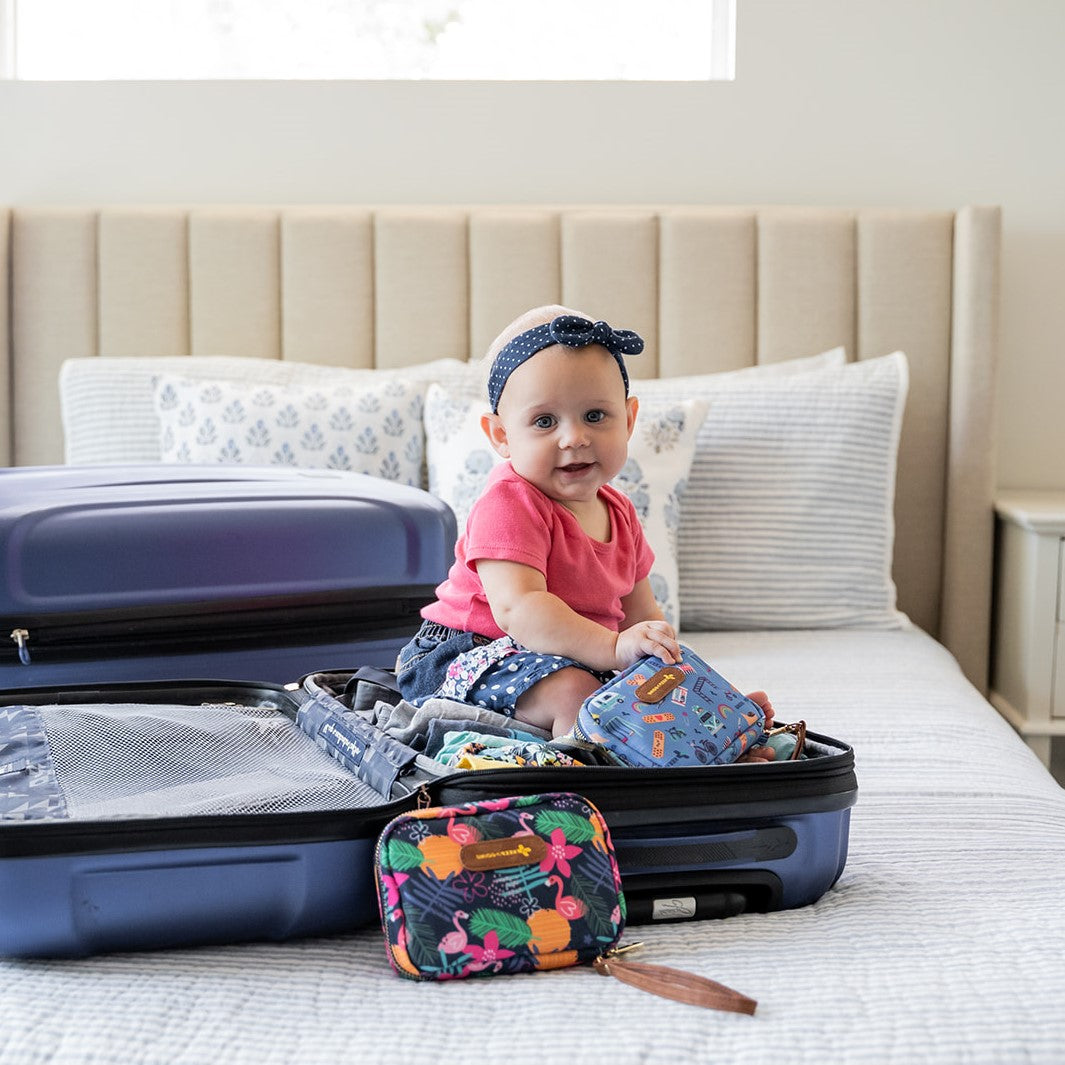Code: JOY24 for 15% Off
Code: JOY24 for 15% Off
First Aid Kits

Staying Prepared at 30,000 Feet - First Aid Tips for Air Travel with Kids
June 11, 2024 3 min read
First Aid Tips for Air Travel with Kids: Staying Prepared at 30,000 Feet
Air travel with kids can be both exciting and challenging, especially when managing unexpected medical situations mid-flight. From minor scrapes and cuts to allergic reactions and ear pain, being prepared with the right first aid knowledge and supplies is a good idea for a smooth journey. In this blog post, we'll explore some common injuries and issues that can occur with kids during air travel and provide tips on handling them calmly and confidently.
Minor Scrapes and Cuts:
Kids are prone to bumps and bruises, even in the confined space of an airplane cabin. Whether they trip while walking down the aisle or accidentally bump into a sharp edge, minor scrapes and cuts can happen unexpectedly. Here's what to do:
- Clean the wound with antiseptic wipes or alcohol pads from your First Aid Kit - all our Kits come with NON-STING cleansing wipes to make it extra easy for the little ones.
- Apply a bandage to cover the cut and protect it from further irritation. Colorful bandages help to distract and calm.
- Comfort your child and reassure them that it's okay. Distraction with a favorite toy or snack can help alleviate any anxiety.
Allergic Reactions:
For children with known allergies, exposure to allergens while traveling can pose a serious risk. Whether it's an allergy to peanuts, shellfish, or other common triggers, it's essential to be prepared for an allergic reaction. Here's how to respond:
- If your child shows signs of an allergic reaction, such as hives, swelling, or difficulty breathing, act quickly.
- Administer any prescribed medications, such as an epinephrine auto-injector (e.g., EpiPen), as directed by your child's doctor.
- Apply hydrocortisone cream from your first aid kit to the affected area for minor allergic reactions, such as itching or localized rashes.
- Consider giving your child an age-appropriate dose of antihistamine medication, such as Benadryl, to help alleviate symptoms. Even if you don't know of any allergies, bring over the counter antihistamine won the plane with you as precaution.
- Alert the flight crew immediately, as they may be able to provide additional assistance or access medical supplies.
Ear Pain or Pressure:
Changes in air pressure during ascent and descent can cause discomfort or pain in children's ears, particularly if they have congestion or ear infections. Here are some tips to help alleviate ear pain:
- Encourage swallowing or chewing during ascent and descent to help equalize ear pressure.
- Offer your child a pacifier or bottle to suck on, especially for infants and toddlers.
- Use earplugs or earplanes specially designed for air travel to regulate pressure in the ears.
Dehydration:
The dry cabin air and limited access to fluids during a flight can increase the risk of dehydration in children. To prevent dehydration, consider the following tips:
- Encourage your child to drink plenty of water before, during, and after the flight. Don't forget to drink water yourself!
- Pack refillable water bottles and ask the flight attendants to refill them regularly.
- Avoid excessive consumption of caffeinated or sugary beverages, as they can contribute to dehydration.
In conclusion, being prepared with first aid knowledge and supplies is crucial for ensuring a safe and comfortable air travel experience with kids. By knowing how to handle common injuries and medical situations, such as scrapes, cuts, allergic reactions, ear pain, and dehydration, you can travel with confidence and peace of mind. Remember to pack a well-stocked first aid kit and familiarize yourself with its contents before your flight. Safe travels!

GET 10% OFF IMMEDIATELY
Subscribe to our Newsletter and receive a 10% coupon when you enter your e-mail address.










